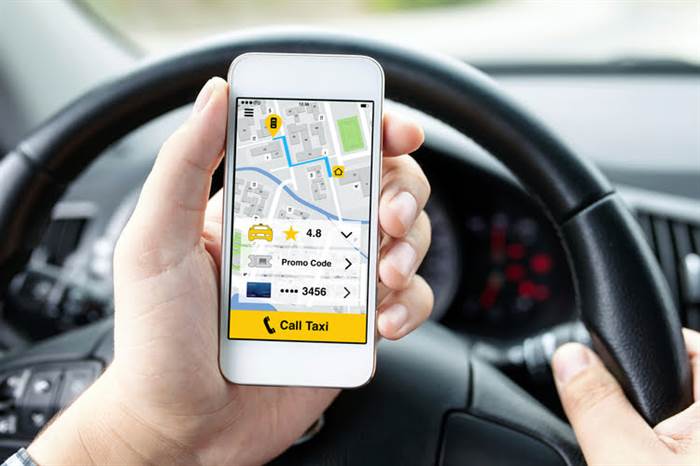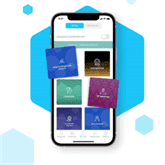Telehealth applications are built for different target audiences, such as doctors, patients, and even companies. It is difficult to strike the right amount of balance to prioritize one user over the other. When creating healthcare UI/UX designs, it is crucial to keep the needs of these users in mind. The team specializes in custom software development, web development, mobile app development, ux/ui design, and more, and the company is in Berlin, Germany and Seefeld, Germany. Futuro Team, a small software development company, is located in Berlin, Germany and Kyiv, Ukraine. The team focuses on custom software development, ux/ui design, web development, and mobile app development.

Infusing security and reliability also helps to build trust among the users and higher engagement. DevOps allows for more frequent testing, bug fixes, and security updates, ensuring that healthcare interfaces remain reliable, secure, and aligned with industry standards. While keeping the design simple helps in crafting a clear UI, aligning various elements helps to provide a user-friendly interface and visually pleasing look. By taking into consideration accessibility and inclusivity, design the telehealth app that is easy to navigate for individuals with disabilities.
User Interface Design Guidelines: 10 Rules of Thumb
When working on such applications, designers will need to take into account their specifics and pay special attention to the color palette, using nature-like shades and soft graphic elements. For example, we developed an online therapy service, which allows patients to consult their therapists remotely, reducing the need for travel and increasing accessibility for people who live in remote places. Applying UX design in healthcare is rewarding work that benefits patient Who is a UX Engineer well-being. Prioritizing UX from the start can save time and money—and help achieve medtech’s vision for improved health. Optimize the apps to use fewer clicks by implementing intuitive navigation menus, well-structured information hierarchies, and clear call-to-action buttons. Additionally, minimizing unnecessary steps in processes such as appointment booking or accessing medical records not only saves time but also reduces the risk of user frustration.
- A lot of applications offer free exercise plans with various intensity levels and exercise styles.
- However, we are happy to share the information architecture we’ve built for Raccoon Recovery, which was used during prototyping.
- In this design there is no room for “surprise”, so the users always know what to expect on the following pages.
- On this level, VUIs serve to improve user-friendliness and safety without sacrificing the quality of service.
- Thus, investing in UX within healthcare settings is essential if we aim to achieve our ultimate goal – improved health outcomes for people everywhere.
On this level, VUIs serve to improve user-friendliness and safety without sacrificing the quality of service. When healthcare workers wear gloves to use touch screens or typing, it is not always as smooth as without gloves. In such realities, contactless operations via a voice user interface with the combination of a graphical user interface are more efficient during the pandemic as well as post the pandemic.
Intuitive interfaces
When working on a medical UX design project, there are some elements specific to healthcare that need due attention. For example, in healthcare user interface design, it is important to consider the conditions in which the users will interact with the product or service. The design, therefore, should not be difficult to interact with to ensure safety and better accessibility. Healthcare UX design refers to the holistic experience of the target audience with a healthcare product or service. UX in healthcare apps and products is essential to create a pleasant and useful experience for the users. No matter which of the above-mentioned areas your product or service is focusing on, a good user experience is essential for its success and integrity in improving the well-being of people.
The UX design of your healthcare app should be intuitive, which means simple and predictable. So let’s look at the main hardships that you might stumble upon when designing a healthcare app’s UX. According to statistics, as of 2020, the number of healthcare apps has ballooned to 90,000. This is quite an impressive number, knowing that in 2008 the App Store counted no more than five hundred apps.
How UX in healthcare saves lives
At Limeup, we offer various healthcare digital solutions to medical startups and established companies worldwide. The end goal of UX design is to ensure the navigation is flawless, the digital product is understandable, and it helps users solve their challenges. We get feedback from various users of the healthcare solution after consultation with your team. This is done so that we are clear on what areas need improvement and can be made easier. Follow us here for content relating to digital healthcare, pharmaceuticals, health technology and stay up to date. Helping patients book appointments, sending reminders, providing information, collecting feedback, and checking on health status — all these are becoming possible with well-designed chatbots.

In a world that’s more intertwined than ever, the challenges we face aren’t standalone issues; they’re nodes within vast networks. To navigate this landscape, an understanding rooted in systems thinking becomes not just beneficial but essential. By cultivating a feedback-driven environment, solutions can be fine-tuned, ensuring they remain relevant and effective. Yet, in our accelerated age of exponential technologies, designers face the task of harmonizing rapid innovation with genuine human-centric solutions. It becomes less about being the first to launch a new feature and more about launching something that truly matters to the user. This necessitates the development of intuitive interfaces for users of varying ages, literacy levels, and cognitive capacities.
Meet the team
Thanks to slow movements, more and more applications, and digital products helping us avoid burnout and direct our minds towards mindfulness. We’re always ready for the challenge that exciting healthcare UX projects offer. If your company has encountered some obstacles, book a free consultation with us, and let’s discuss the possible solutions. The health-tech sector is among the fastest-growing in the world today, making the stakes super high. Investments in healthcare AI software, hardware, and service market will reach $34 Billion Worldwide by 2025. There are several new technological trends emerging in healthcare being in different levels of maturity, many of them with significant progress insight.
As an example, Headspace is a nicely designed app that is perfect for beginners. A calming voice leads you through guided sessions, and after a few minutes, you feel total zen even in your smallest body parts. Only three to five minutes a day can bring changes into your life in a few weeks.
Browse UX / UI Design Topics
Design separate mock-ups for a website and mobile devices that provide a visual representation of how various features can be added in different screen sizes. Intive, an enterprise app modernization company, was launched in 1999. The team offers enterprise app modernization, ux/ui design, mobile app development, application testing, and more.
Employers also realized this and endeavored to support their remote workers. Apart from meditation and mindfulness, regular physical exercise reduces anxiety and produces happiness hormones. Having a daily routine sets boundaries and gives the feeling of control. A lot of applications offer free exercise plans with various intensity levels and exercise styles. Mindbowser was easy to work with and hit the ground running, immediately feeling like part of our team.
Increase accessibility of healthcare services
Design professionals need to ensure that the user interface design for healthcare applications adheres to the basic UI/UX principles. What follows is a discussion on the importance of healthcare experience design and some of the key concerns for UI/UX designers. At Areteworks, we believe that intuitive and affordable healthcare UX design is essential for improving patient outcomes and enhancing stakeholder value. Our UX designers bring unique and specific expertise in healthcare diagnostics, pharmaceutical analysis, hospital management, and patient monitoring tools. We specialize in creating inspiring UX systems for desktop, mobile, and online healthcare applications that empower users to navigate complex healthcare environments with ease. With our user-centered approach and deep healthcare expertise, we are committed to delivering solutions that improve healthcare outcomes and create sustainable value for our clients.
Emerging UI/UX Patterns in Generative AI: A Visual Guide
For example, there was this mental health app, which was supposed to provide fast and affordable psychological help to clients via instant 5-min calls. We clearly realized that we were dealing with a sensitive topic of psychological help, so profound research into users’ pains and needs was a must. The field of medicine and healthcare is in dire need of professional designers, and the impact created by good designs holds great value for patients, healthcare providers, and enterprises alike. If you’re a student of design, there’s a financial benefit in the field of healthcare UX design. A handsome healthcare UX designer salary, therefore, is also a good motivation to consider this field.
Instead, patients want to use solutions designed specifically for them. Talkspace, an online therapy platform, takes personalization and customization of services very seriously. When you first visit the website, their main call to action is to take the quiz to find the exact type of mental health support you need. The device told an anesthesiologist which medication to administer based on the patient’s status. Our design team assigned color codes to each drug so the surgeon would know at a glance which to use.


